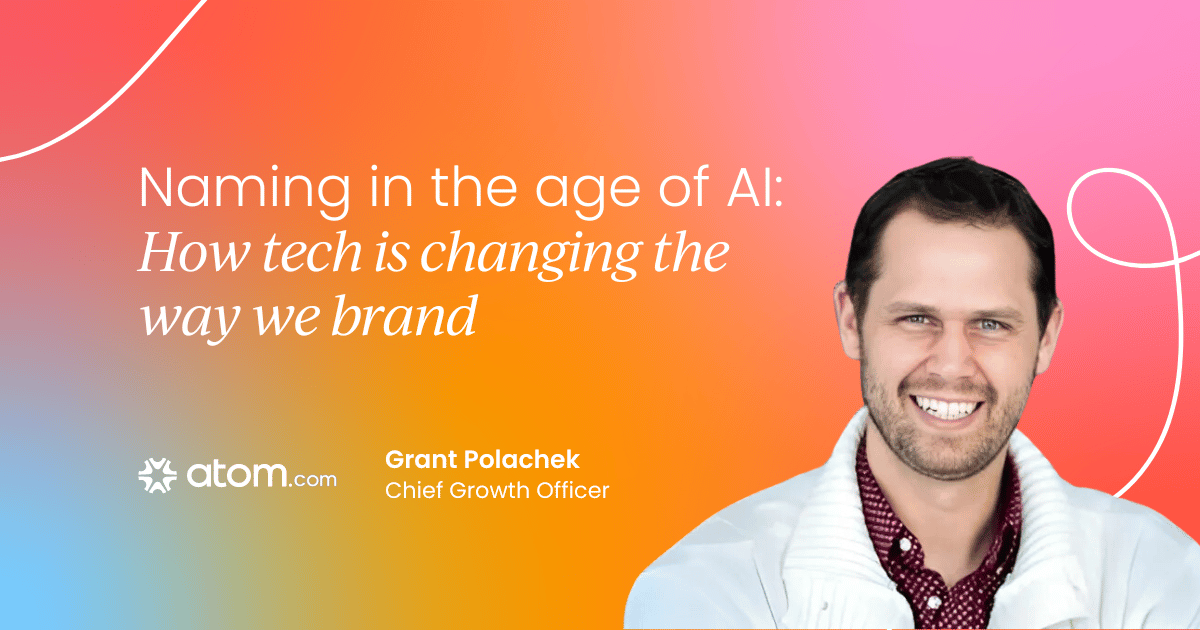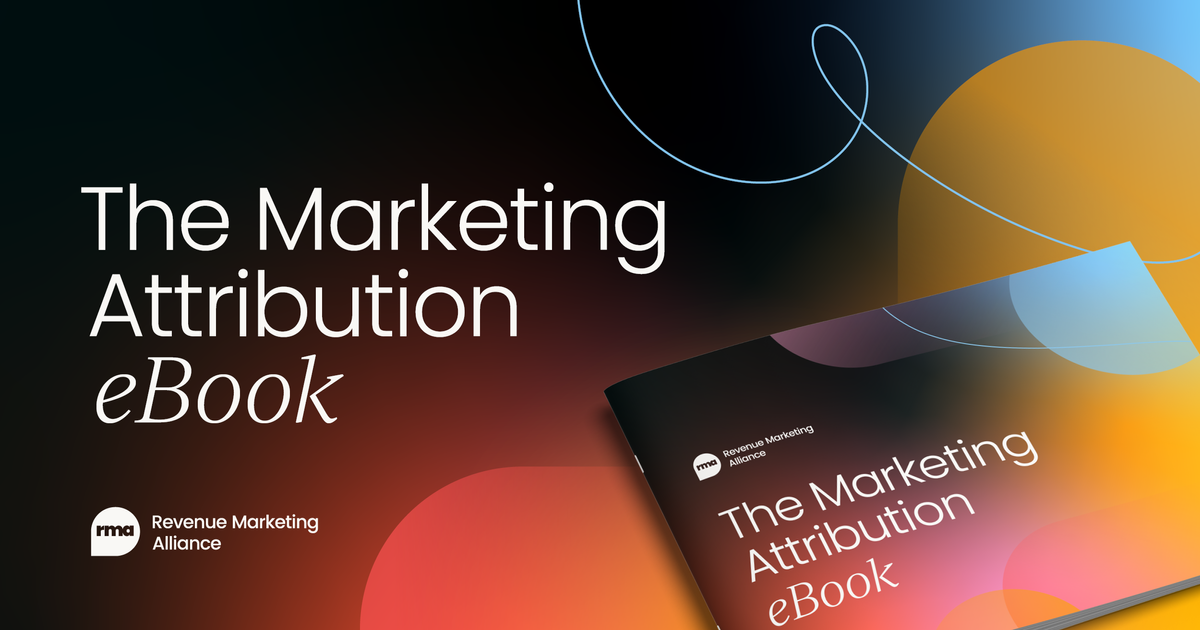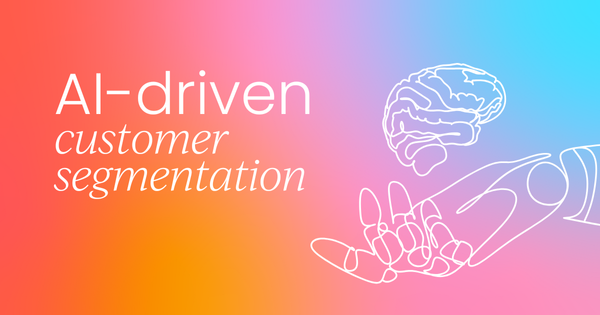In a world where customers expect personalization at every turn, traditional segmentation can leave you a step behind.
Enter AI-driven segmentation—an approach that’s transforming how brands connect with their audiences by delivering more accurate, relevant, and actionable insights than ever.
By using machine learning, predictive analytics, and real-time data processing, businesses can create highly targeted segments that evolve alongside consumer behavior. This allows for personalized campaigns that capture attention, build loyalty, and drive conversions.
In this blog, we’ll explore the opportunities AI presents for customer segmentation and discuss how to navigate the challenges with adopting this powerful technology.
The promise of AI-driven customer segmentation
AI technology brings an exciting array of capabilities to customer segmentation, enhancing how businesses understand and engage with their audiences.
Here are some of the core opportunities AI-driven customer segmentation presents:

Advanced data analysis
AI can sift through massive amounts of data in real-time, far beyond what manual analysis could achieve. This enables businesses to identify patterns and correlations that may not be immediately obvious.
AI can help marketers detect buying behaviors, preferences, and pain points, creating segments that are highly targeted and relevant. This level of insight forms the basis of marketing strategies that speak directly to each segment’s needs, leading to more effective and impactful campaigns.
By analyzing customer interactions across multiple channels—social media, website visits, email engagement, and more—AI offers a comprehensive understanding of customer preferences.
This deeper insight into customer journeys helps marketers optimize their strategies, ensuring that each touchpoint is crafted to nurture leads effectively and turn them into loyal customers.
Personalization at scale
With AI, businesses can move from basic demographic segmentation to more nuanced, behavior-based groupings. This allows for highly personalized campaigns, delivering tailored content that resonates with individual segments. Personalization, driven by AI, is proven to boost customer engagement and conversion rates.
For example, leveraging the best AI email assistant can also enhance your team’s email communication efficiency, ensuring that the right message reaches the right segment, improving open rates, and fostering stronger customer relationships.
AI’s ability to personalize at scale means that even large companies can tailor their marketing efforts to thousands or millions of customers, each with unique characteristics. This capability improves how customers perceive a brand, as they receive messages that feel relevant and curated specifically for them. In a market saturated with generic outreach, this level of personalization can be a defining competitive advantage.

Predictive Insights
AI algorithms are capable of predictive analytics, which means they can anticipate future behaviors based on past data. This predictive power allows businesses to proactively address customer needs, reducing churn and enhancing satisfaction.
By acting on these insights, marketing teams can deploy campaigns at optimal times and adjust messaging to stay relevant and timely, ensuring maximum impact.
Predictive analytics can inform not just marketing strategies but also product development. By identifying upcoming trends and emerging customer demands, businesses can adjust their product or service offerings to align with what their customers will need in the future.
This foresight enables companies to stay ahead of the curve and remain competitive in their industry.
Enhanced customer lifetime value (CLV)
AI can support upselling and cross-selling opportunities that increase CLV by creating more precise and meaningful customer segments. Understanding which customers are likely to respond to certain offers can help businesses personalize recommendations and build long-term relationships.
For instance, AI can identify when a customer is nearing the end of their subscription period and target them with timely renewal offers or complementary services that enhance their existing product experience.
Boosting CLV also comes from deepening customer trust. AI helps by tailoring post-purchase interactions—such as personalized follow-ups, feedback collection, and support services—that make customers feel valued beyond their initial purchase.
This holistic, data-driven approach can solidify long-term loyalty and maximize revenue potential.

Challenges of implementing AI in customer segmentation
Despite the potential benefits, businesses often face significant challenges when adopting AI-driven customer segmentation. Here’s what to keep in mind:
Data quality and availability
The effectiveness of AI hinges on the quality and volume of data it processes. Inconsistent or incomplete data can lead to unreliable results, hindering the segmentation process. Businesses need to establish strong data collection and management protocols to leverage AI successfully.
To combat this, organizations should focus on integrating data from various sources and maintaining consistency in data formats.
Data hygiene practices, such as regular audits and cleaning, are essential to ensure that the AI algorithms work with the most accurate information possible. Quality data leads to quality insights, making this step non-negotiable for effective AI implementation.
Complexity of implementation
AI solutions can be technically challenging to implement, particularly for businesses with limited technical resources. This may require investment in data science expertise or partnerships with AI solution providers to deploy and optimize the technology effectively. The complexity often lies in training the AI to understand and align with the unique needs of the business.
A phased approach to implementation can ease this challenge. Businesses can start small with pilot projects, gathering feedback and making necessary adjustments before a full-scale rollout. This incremental strategy helps teams adapt to new technology gradually, fostering better understanding and skill development.

Privacy and ethical considerations
Using customer data for segmentation raises valid concerns about privacy and data security. Businesses must ensure compliance with regulations such as GDPR and adopt transparent practices to build trust with their customers.
Missteps in data privacy can have legal consequences and damage brand reputation, so adopting best practices in data ethics is crucial.
Organizations should also make an effort to educate their teams and customers on how data is collected, processed, and protected. This transparency not only builds trust but also aligns with ethical standards that are becoming increasingly important in today’s data-driven environment.
Implementing strong security measures, such as data encryption and access control, ensures that customer data remains protected at all times.
Over-reliance on technology
While AI can automate and enhance many aspects of customer segmentation, human oversight remains essential. AI may identify correlations without fully understanding context, potentially leading to skewed or misguided insights.
Combining AI-driven analysis with human intuition ensures more accurate and effective marketing strategies.
Marketing teams need to maintain a balance between AI outputs and human judgment. While AI provides valuable insights, it’s the expertise of experienced professionals that will contextualize those insights and apply them effectively.
This collaborative approach allows companies to use AI as a powerful tool without losing the essential human touch in their customer interactions.

Practical steps for success
To maximize the benefits of AI-driven customer segmentation and navigate potential challenges, consider these practical strategies:
Invest in data quality
Establish strong data governance practices, ensuring that the data feeding into your AI systems is clean, comprehensive, and up to date. High-quality data will lead to more accurate insights and more effective segmentation.
Implement a structured data strategy that involves consistent data collection, cleaning, and integration from all customer touchpoints.
Combine AI with human insight
AI is a powerful tool, but it should complement, not replace, human expertise. Involve your marketing and data teams in interpreting AI outputs to add context and make informed decisions that align with your brand’s voice and values.
This partnership will create a robust strategy that leverages the best of both worlds—data precision and human empathy.
Choose the right tools
Opt for AI platforms that align with your business’s needs and technical capabilities. Ensure that the platform you choose has features that simplify implementation, offer customization, and integrate smoothly with your existing marketing systems.
Choosing scalable tools will help your business grow its AI capabilities as its needs evolve.
Prioritize privacy
Make data privacy a non-negotiable part of your strategy. Obtain explicit consent from customers, comply with regulations, and educate your audience on how their data is being used.
Transparency builds trust, which in turn supports stronger customer relationships. Regularly review and update your privacy policies to stay compliant with new regulations and maintain a positive brand reputation.

Stay adaptable
The landscape of AI and consumer behavior is always changing. Regularly evaluate the performance of your segments, update models as needed, and stay informed about new AI capabilities to ensure your strategy remains effective and competitive. Continuous learning and adaptation will keep your business agile and ready for shifts in market dynamics or customer preferences.
Moving forward with confidence
AI-driven customer segmentation offers unparalleled opportunities for creating impactful, personalized marketing strategies.
By understanding and addressing the challenges involved, businesses can harness the power of AI to engage their audiences more effectively, boost customer satisfaction, and drive sustainable growth.
Use AI thoughtfully and with a balanced approach, combining data-driven insights with human expertise to create a segmentation strategy that resonates and delivers results.
With the right balance of technology and human insight, your business will be well-positioned to thrive in an increasingly competitive and personalized marketing landscape.
With the Marketing Attribution ebook, you can get a crystal-clear view of which marketing channels truly drive revenue, backed by data from your peers and industry experts.




 Follow us on LinkedIn
Follow us on LinkedIn









